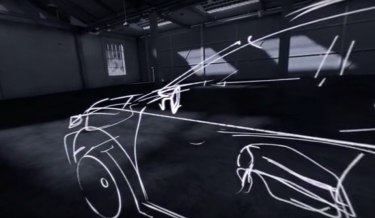A variety of VR headsets are now generally available, and although AR headsets like Microsoft HoloLens are harder to come by, Apple’s ARKit and the just released 1.0 version of Google’s ARCore are available for potentially hundreds of millions of smartphones.
Yet, the most exciting recent news is that the much-rumored, but little-understood first version of the Magic Leap glasses will be available sometime this year. In fact, only a week or so ago the Magic Leap Creator Portal was opened. Although the Magic Leap appears to be primarily an AR device, the company behind it seems remarkably unwilling to classify it fully in either the AR or VR category.
Interestingly, when we surveyed early adopters of AR and VR, we found they don’t think of the technologies as separate either: in fact, around half believe AR and VR will eventually be integrated into one common device. So, the real question becomes, what adoption challenges are we facing and what do we need to do to address them?
Mind the paradox
Like with most new technologies, VR is currently struggling with high prices and glitchy performance. But more intriguingly, as we discuss in the Ericsson ConsumerLab Merged Reality report, VR creates paradoxes for users. If you usually believe the glass is half empty you may say these issues are exactly what prevent the technology from going mainstream – but, if you believe the glass is half full you might think that untangling paradoxes like these is exactly what is needed for success.
First, the paradox of mobility: VR lets you virtually go anywhere, but since you are cut off from your surroundings you can’t physically go anywhere with it.
Second, the paradox of isolation: VR lets you socialize remotely with others, but isolates you from people standing next to you.
Finally, the social paradox of integration: Those who are socially challenged in the real world are more socially oriented in VR.
Reconciling the paradoxes
Although technically different, consumers see VR and AR as two sides of the same coin. “Eventually VR and AR hardware will merge and you will be able to do both from a single device,” predicted one respondent.
Simply put, if either VR or AR happens, the other one happens too. From the consumer’s perspective, they are just situational adaptations: “AR will be something you use more outside while VR will be something you use inside,” as one respondent said.
AR needs to be fully integrated with our field of vision, or else it breaks the continuity to VR. Computers have moved from desktops to laptops, and more recently to the tops of our palms with smartphones. But now, computers are all set to sit atop our heads. In fact, as many as half of the early adopters we interviewed expect VR and AR to be integrated in one device, like a pair of glasses.
Adding a slider to regulate how much of the surrounding environment is seen through such glasses would alleviate both the mobility and isolation paradoxes. However, applications for such a device would need to dynamically adapt across the full spectrum, from total immersion to complete view of your physical surroundings.
But the paradox of mobility is primarily about social norms. People feel awkward with cables sticking out their heads, so the wireless 5G-connectivity that Ericsson and others are demonstrating now will be an important step. Publicly donning a bulky headset or glasses with visible cameras will invariably make you break the social norm and stand out from the crowd: in a bad way. Just take a look at what happened with the first incarnation of Google Glass. Hence, AR/VR glasses need to look like traditional glasses in order to gain widespread acceptance. That’s a basic hygiene requirement – although not yet technologically possible. As close to normal glasses as Google Glass was, the camera was still obvious and perceived as intrusive to privacy by the public.
An alternate solution would be to make the glasses invisible. Just like there are cochlear implants that not only restore hearing but also add functionality like audio filters or new frequency ranges, in the longer term we can expect visual implants that do the same. Implementing AR/VR this way might sound scary but also might be more socially acceptable.
In comparison, the paradox of isolation is easier to address. Facial recognition technology is advancing quickly, and seamlessly adding people to your field of view in an audio-visually convincing way should be doable whether they stand next to you or are far away. We are already starting to see steps towards this development, with for example the HTC Vive Pro headset that goes on sale this spring sporting dual front-facing cameras.
Solving the social paradox of integration will be a lot harder as social rules and etiquette have to be worked out across large and culturally diverse populations. Will you feel comfortable with people walking up very close to you? How explicit can we accept body language to be? Although some social platforms may have initial success and buzz around them, it will be very difficult to translate early adopter popularity to a more general user base. A first victim seemed to be Altspace, but the service was given an extended lease of life when it was taken over by Microsoft. Expect more failures with VR social networking than with other application areas.
Moving into the mainstream
Mainstream AR and VR adoption needs that killer application.
Although the idea of a “killer app” might seem like a cliché, finding the unique feature that everyone wants is like finding the proverbial pot of gold at the end of the rainbow.
Whereas people in interviews naturally tell us about the excitement and the very strong feeling of immersion that using these new technologies gives them, they also point to a fundamentally different and much more important aspect: the expectation that AR and VR will blend with other activities in life to the point where we do not think about them anymore.
Physical devices such as TVs and PCs will be represented digitally, and you will notice little difference using either. The same goes for physical spaces such as classrooms, offices and shops. Having personalized car navigation-like arrows embedded directly in the streets will eventually be as normal as common lane arrows, and the physical and virtual experiences you share with friends at a concert will be identical.
Many new technologies make you experience something new and unexpected: but the technologies that actually succeed are obviously the ones that become part of everyday life. In that sense, the killer app is the ability to blend in while at the same time fundamentally changing the game. Things that stick out just become novelty items, and then they disappear. Like 3D TVs, for example.
Right now, AR and VR applications focus on the ‘wow’ factor. The first time that you experience them may blow your mind, but you have already lost interest the second time. Conversely, twiddling a dial or flipping a switch will never blow your mind, but when AR and VR applications start using haptics and tactile feedback you will forget those virtual dials and switches are not real.
AR/VR technology holds the promise of merging with physical reality to the point of being taken totally for granted – and that is the killer application.
About Dr. Michael Bjorn
Dr. Michael Bjorn is Head of Research at Ericsson ConsumerLab. Reports are available publicly at http://www.ericsson.com/consumerlab
Source from arvrmagazine.com




